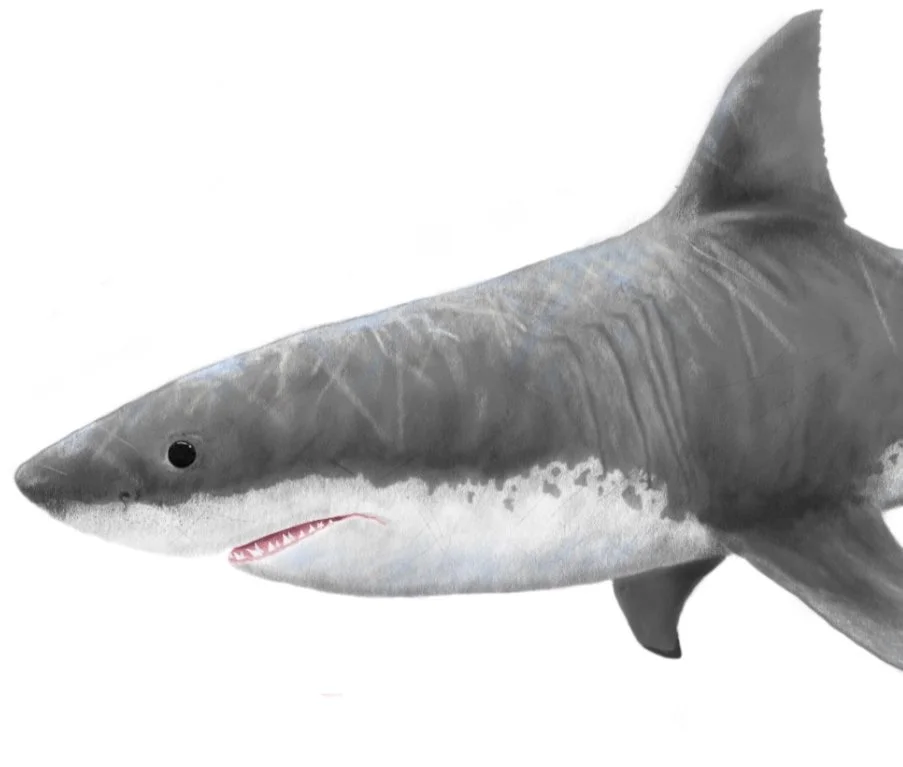GREAT WHITE SHARK
Carcharodon carcharias
The Great White Shark, scientifically the Carcharodon carcharias, is a large predatory fish found in oceans worldwide. As an apex predator, it plays a crucial role in marine ecosystems, primarily preying on seals, sea lions, and fish. Recognised by its streamlined body, pointed snout, and powerful jaws lined with rows of serrated teeth, the Great White Shark is an efficient hunter, using ambush tactics to capture its prey.
IUCN Conservation Status: Least Concern (LC)
Class Chondrichthyes
Genus Carcharodon
Family Lamnidae
Order Lamniformes
OVERVIEW
SIZE
Typical length of 3 to 5 meters
Largest ever found: 6.4 meters
DIET
The Great White Shark feeds on a broad spectrum of prey, including small fish and marine mammals.
BEHAVIOUR
The Great White Shark exhibits intelligence and curiosity, engaging in complex social interactions that help mitigate conflicts within its group. Renowned for its spectacular full breaches out of the water, it possesses warm-blooded physiology and demonstrates instinctual homing behaviors, navigating vast oceanic territories with precision.
HABITAT
Great White Sharks inhabit a range of environments, from shallow coastal waters to the deep ocean, with frequent visits to rocky reefs and areas nearby pinniped colonies. They can traverse vast distances across the ocean, sometimes reaching depths of up to 1280m during their travels.
BREEDING
Great White Sharks have a gestation period of approximately 12 months, giving birth to live pups. Each litter typically consists of 2 to 17 pups, with females bearing offspring every 2 to 3 years. Males reach sexual maturity around 9 to 10 years old, while females become reproductive between 14 and 33 years of age.






